Pinus Project - Species Identification
Pinus halepensis vs Pinus eldarica
P. halepensis and P. eldarica trees are young (2-10 years old), they look remarkably similar and are difficult to distinguish. They both have two needles per fascicle that are each 2-5 inch long needles and, at this early age, also both display strong apical dominance with accompanying pyramidal or "Christmas tree" appearance. With maturation, classification becomes easier as the canopy structure of P. halepensis will begin to change, creating a variety of different canopy shapes. The pictures of Pinus halepensis and Pinus eldarica, below, show examples of mature trees of each species. Pinus halepensis develops an open and rounded canopy while Pinus eldarica maintains a Christmas tree structure after maturity. On the University of Arizona main campus, the most common Pinus species found is the Aleppo pine (Pinus halepensis), while the Mondel or Afghan pine (Pinus eldarica) is the second most prevalent.
Image
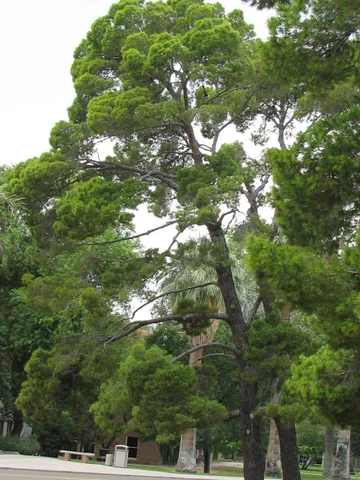
Pinus halepensis (top)
versus
Pinus eldarica (bottom)
Image
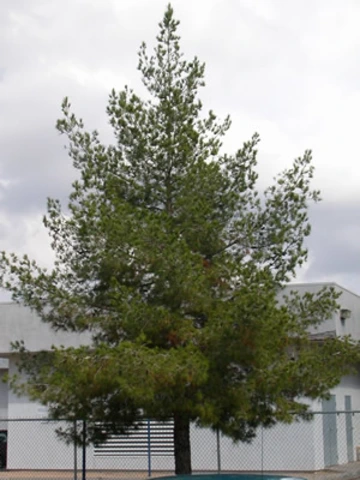
Pinus halepensis Species Identification
Pinus halepensis (Aleppo Pine)
The Aleppo pine is easy to identify when it is mature because of its tendency to develop a multi-branched structure. The tops of the canopy have rounded forms and the appearance has an overall "majestic" attribute. The following pictures illustrate the range of structural shapes and some additional botanical detail distinguishing the species.
The Aleppo pine is easy to identify when it is mature because of its tendency to develop a multi-branched structure. The tops of the canopy have rounded forms and the appearance has an overall "majestic" attribute. The following pictures illustrate the range of structural shapes and some additional botanical detail distinguishing the species.
Image
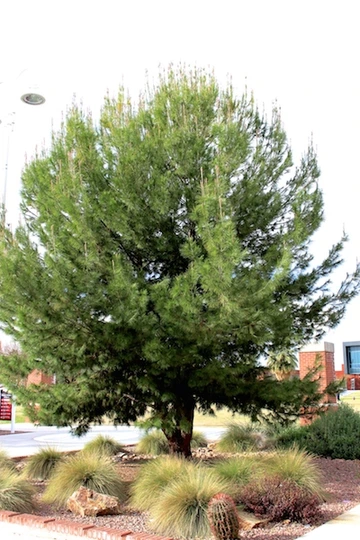
Pinus halepensis young canopy remains more pyramidal in form until it becomes more rounded with age.
Image
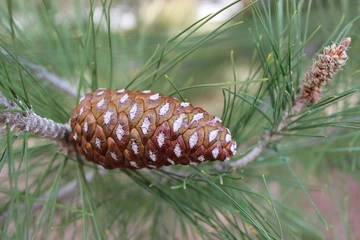
Pinus halepensis immature cones
Image
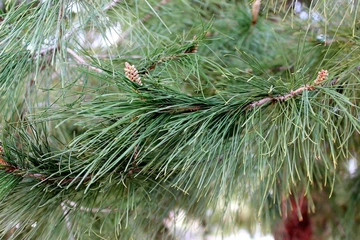
Pinus halepensis leaves
Image
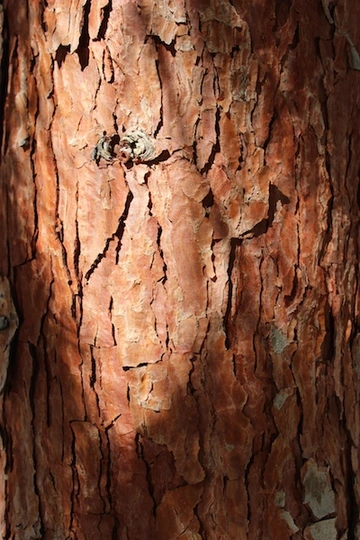
Pinus halepensis bark pattern

